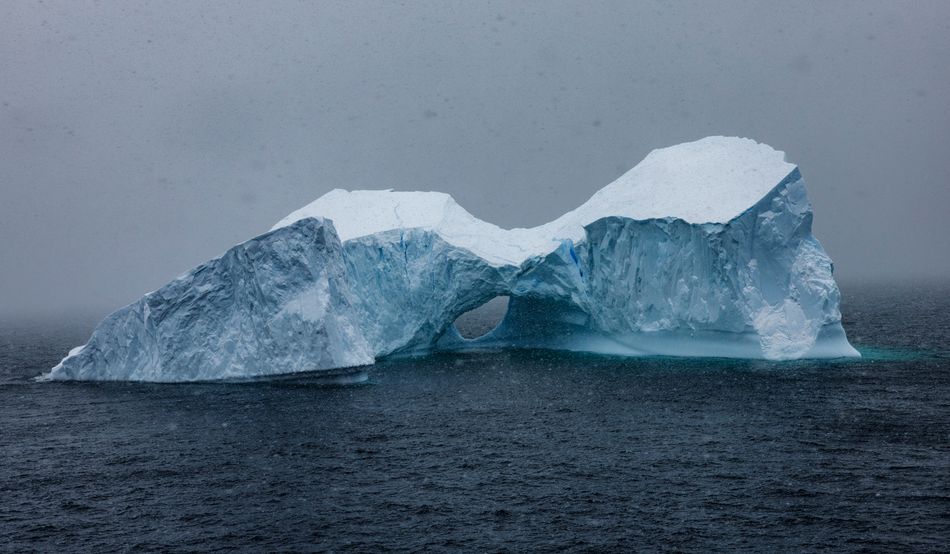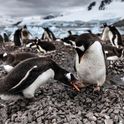Antarctica’s krill, a shrimp-like crustacean with a biomass so large it constitutes a globally important carbon sink and climate change buffer, provides over 95 per cent of the calories consumed by the icy region’s whales, seals, penguins and seabirds.
But growing fishing pressure on the species, a rich source of omega-3 primarily used as feed in aquaculture, has raised alarms about the impact on the health of the overall marine ecosystem.
In early August, with three months still left in the fishing season, the Commission for the Conservation of Antarctic Marine Living Resources (CCAMLR) was forced to implement a closure for the first time ever.
The shutdown follows CCAMLR’s failure to renew a rule designed to prevent concentrated fishing near key feeding grounds after negotiations broke down at its annual meeting last year.
Now the question is whether the UK, which holds the CCAMLR chairmanship for this and next year, can bring the organisation’s members together behind a plan capable of safeguarding Antarctica’s wildlife for the long term. That will not only require spreading the krill harvest out over a wider expanse of ocean but also reviving talks to establish new marine protected areas (MPAs).
Regrettably, CCAMLR seems to have been moving away from its conservation roots in recent years, as members struggle to find a balance between powerful fishing industry interests and environmental protection.
It is a conspicuous turn for a body that pioneered an ecosystem-based strategy for fisheries management that broke ranks with the single-species approach used by most marine resources managers at the time, and one still employed by the United Nations’ beleaguered regional fishery management organisations(RFMOs).
But arguably the most important tool available to managers today is the MPA. Back in 2002, CCAMLR pledged to develop a “representative system” of MPAs around Antarctica and later agreed to complete the network by 2012. To date, it has only managed to establish two: near the South Orkney Islands and in the Ross Sea.
With climate change dramatically affecting the abundance and distribution of krill and countless other marine species, the task is more urgent than ever. Research has shown that well-managed MPAs, where fishing and other activities are prohibited, provide marine life with an opportunity to rebuild biomass and adapt to warming waters and other stresses. In fact, Antarctica’s krill fleet stands to benefit from the protections as populations expand and allow for responsible increases to the harvest quota.
As a founding member of the original Antarctic Treaty in 1959 and sponsor of the South Orkney Islands MPA, the first in the Southern Ocean, the UK is uniquely positioned to emphasise the importance of multilateral cooperation and ocean conservation.
However, this will take a tremendous amount of diplomatic outreach—much of it extending beyond the confines of CCAMLR talks. It has been reported that the US and New Zealand, sponsors of the Ross Sea Region MPA, conducted scores of formal and informal discussions over several years to win its approval in 2016. Today, the Ross Sea Region MPA is still the world’s largest ocean sanctuary and its path to implementation provides a model for the UK to follow in the months ahead.
It is a fortuitous time for action.
In 2022, the UN agreed to protect at least 30 per cent of the ocean by 2030 (a goal known as 30x30) with the adoption of the Kunming-Montreal biodiversity agreement under China’s and Canada’s leadership. In September, the UN High Seas Treaty reached 60 official ratifications, setting the stage for designating MPAs in areas beyond national jurisdiction, which cover nearly half the planet.
With only about 10 per cent of the ocean currently under varying levels of protection, it’s hard to imagine how 30 per cent coverage will be achieved without Southern Ocean MPAs. Today, approximately 13 per cent of the waters around Antarctica are protected. It is well within CCAMLR’s power to add to this the four scientifically vetted MPAs already awaiting approval: the Antarctic Peninsula, East Antarctic and Weddell Sea Phases I and II. This would expand coverage to 26 per cent regionally and add 2.6 per cent worldwide—bringing the 30x30 goal within reach. These areas are known ecological hotspots that are essential for diverse wildlife.
The international community is beginning to appreciate the vital role the Southern Ocean plays in the global climate system. In 2023, the G20 leaders’ declaration voiced support for new Antarctica MPAs, and the area’s research stations provide invaluable climate science data used in consequential policymaking.
The UK has long been a part of Antarctica’s history. For the next 15 months or so, it has a rare opportunity to help set its future.
Brought to you by asoc.org & antarctica2030.org












